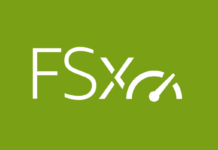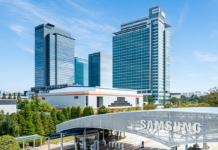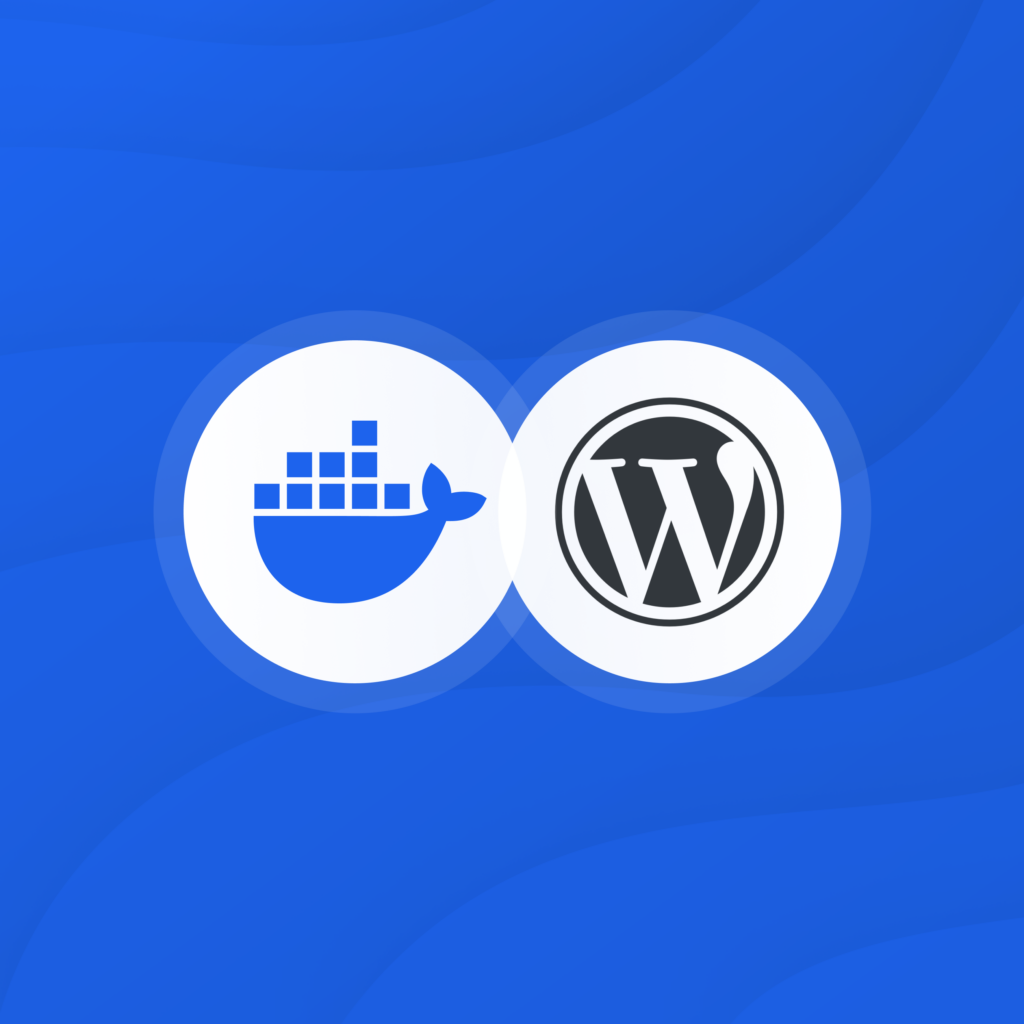If you’ve ever found yourself struggling with setting up a WordPress environment, rest assured, you’re not alone. WordPress is a widely-used content management system (CMS) that powers over 40% of all websites, showcasing its versatility and popularity. However, using traditional local development setups like MAMP, WAMP, or XAMPP can often lead to issues, such as inconsistencies and the notorious “it works on my machine” dilemma.
As projects expand and teams grow, having a consistent, scalable, and efficient development environment becomes increasingly important. This is where Docker comes into the picture, transforming the way we develop and deploy WordPress sites. To enhance this process, Traefik, a modern reverse proxy, can be integrated to automatically secure your site with TLS certificates, ensuring it runs safely over HTTPS. Traefik is available as an official image on Docker Hub.
This comprehensive guide will walk you through the process of Dockerizing your WordPress site using practical, real-world examples. We will cover creating Dockerfiles, containerizing existing WordPress sites (including data migration), and setting up Traefik for automatic TLS certificates. Whether you’re starting a new project or migrating an existing site, this tutorial is designed to assist you.
Why Containerize Your WordPress Site?
Containerizing your WordPress site offers numerous benefits that can greatly improve your development workflow and the overall performance of your site.
Increased Page Load Speed
Docker containers are known for being lightweight and efficient. By packaging your application and its dependencies into containers, you minimize overhead and optimize resource usage. This can result in faster page load times, enhancing user experience and improving SEO rankings.
Efficient Collaboration and Version Control
With Docker, your entire environment is defined as code. This ensures that all team members are working with the same setup, eliminating environment-related discrepancies. By using version control systems like Git, changes to your Dockerfiles and other configurations can be easily tracked, making collaboration seamless.
Easy Scalability
Scaling your WordPress site to handle increased traffic is straightforward with Docker and Traefik. You can deploy multiple Docker containers for your application, and Traefik will manage load balancing and routing, while automatically handling TLS certificates.
Simplified Environment Setup
Setting up your development environment becomes as easy as running a few Docker commands. No more manual installations or configurations are needed — everything your application requires is defined in your Docker configuration files.
Simplified Updates and Maintenance
Updating WordPress or its dependencies is a simple process. By updating your Docker images and rebuilding your containers, you’re good to go. Traefik ensures that your routes and certificates are managed dynamically, reducing maintenance overhead.
Getting Started with WordPress, Docker, and Traefik
Before diving in, let’s briefly explore what Docker and Traefik are and how they can revolutionize your WordPress development workflow.
- Docker is a cloud-native development platform that simplifies software development by allowing developers to build, share, test, and run applications in containers. It enhances the developer experience by providing built-in security, collaboration tools, and scalable solutions to boost productivity across teams.
- Traefik is a modern reverse proxy and load balancer designed for microservices. It integrates smoothly with Docker and can automatically obtain and renew TLS certificates from Let’s Encrypt.
Estimated Setup Time
Setting up this environment could take around 45–60 minutes, especially if you’re integrating Traefik for automatic TLS certificates and migrating an existing WordPress site.
Tools You’ll Need
To get started, ensure you have the following tools:
- Docker Desktop: Download and install the latest version if you haven’t already.
- A domain name: Necessary for Traefik to obtain TLS certificates from Let’s Encrypt.
- Access to DNS settings: To point your domain to your server’s IP address.
- Code editor: Your preferred code editor for editing configuration files.
- Command-line interface (CLI): Access to a terminal or command prompt.
- Existing WordPress data: If you’re containerizing an existing site, make sure you have backups of your WordPress files and MySQL database.
What’s the WordPress Docker Bitnami Image?
To ease the process, we’ll use the Bitnami WordPress image from Docker Hub, which comes pre-packaged with a secure, optimized environment for WordPress. This image reduces configuration time and ensures your setup is up-to-date with the latest security patches.
Using the Bitnami WordPress image streamlines your setup by:
- Simplifying configuration: Bitnami images come with sensible defaults and configurations that work out of the box.
- Enhancing security: Regular updates ensure that the images include the latest security patches, minimizing vulnerabilities.
- Ensuring consistency: A standardized environment prevents discrepancies between development, staging, and production.
- Including additional tools: Bitnami includes helpful tools and scripts for backups, restores, and other maintenance tasks.
By choosing the Bitnami WordPress image, you can leverage a tested and optimized environment, reducing the risk of configuration errors and allowing you to focus more on developing your website.
Key Features of Bitnami WordPress Docker Image
- Optimized for production: Configured with performance and security in mind.
- Regular updates: Maintained to include the latest WordPress version and dependencies.
- Ease of use: Designed for easy deployment and integration with other services.
- Comprehensive documentation: Provides guides and support to help you get started quickly.
Why We Use Bitnami in the Examples
In our Docker Compose configurations, we use the Bitnami WordPress image (version 6.3.1). This version aligns well with our goals for a secure, efficient, and easy-to-manage WordPress environment, especially when integrating with Traefik for automatic TLS certificates.
By leveraging the Bitnami WordPress Docker image, you’re choosing a robust and reliable foundation for your WordPress projects. This approach allows you to focus on building great websites without worrying about the underlying infrastructure.
How to Dockerize an Existing WordPress Site with Traefik
Let’s walk through dockerizing your WordPress site using practical examples, including your .env and wordpress-traefik-letsencrypt-compose.yml configurations. We’ll also cover how to incorporate your existing data into the Docker containers.
Step 1: Preparing Your Environment Variables
First, create a .env file in the same directory as your wordpress-traefik-letsencrypt-compose.yml file. This file will store all your environment variables.
Example .env File:
“`plaintext
Traefik Variables
TRAEFIK_IMAGE_TAG=traefik:2.9
TRAEFIK_LOG_LEVEL=WARN
TRAEFIK_ACME_EMAIL=[email protected]
TRAEFIK_HOSTNAME=traefik.yourdomain.comBasic Authentication for Traefik Dashboard
Username: traefikadmin
Passwords must be encoded using BCrypt
TRAEFIK_BASIC_AUTH=traefikadmin:$$2y$$10$$EXAMPLEENCRYPTEDPASSWORD
WordPress Variables
WORDPRESS_MARIADB_IMAGE_TAG=mariadb:11.4
WORDPRESS_IMAGE_TAG=bitnami/wordpress:6.6.2
WORDPRESS_DB_NAME=wordpressdb
WORDPRESS_DB_USER=wordpressdbuser
WORDPRESS_DB_PASSWORD=your-db-password
WORDPRESS_DB_ADMIN_PASSWORD=your-db-admin-password
WORDPRESS_TABLEPREFIX=wpapp
WORDPRESS_BLOG_NAME=Your Blog Name
WORDPRESS_ADMIN_NAME=AdminFirstName
WORDPRESS_ADMIN_LASTNAME=AdminLastName
WORDPRESS_ADMIN_USERNAME=admin
WORDPRESS_ADMIN_PASSWORD=your-admin-password
WORDPRESS_ADMIN_EMAIL=[email protected]
WORDPRESS_HOSTNAME=wordpress.yourdomain.com
WORDPRESS_SMTP_ADDRESS=smtp.your-email-provider.com
WORDPRESS_SMTP_PORT=587
WORDPRESS_SMTP_USER_NAME=your-smtp-username
WORDPRESS_SMTP_PASSWORD=your-smtp-password
“`Notes:
- Replace placeholder values (e.g., [email protected], your-db-password) with your actual credentials.
- Avoid committing this file to version control if it contains sensitive information.
- Use a password encryption tool to generate the encrypted password for TRAEFIK_BASIC_AUTH.
Step 2: Creating the Docker Compose File
Create a wordpress-traefik-letsencrypt-compose.yml file that defines your services, networks, and volumes. This YAML file is crucial for configuring your WordPress installation through Docker.
Example wordpress-traefik-letsencrypt-compose.yml:
“`yaml
networks:
wordpress-network:
external: true
traefik-network:
external: truevolumes:
mariadb-data:
wordpress-data:
traefik-certificates:services:
mariadb:
image: $WORDPRESS_MARIADB_IMAGE_TAG
volumes:- mariadb-data:/var/lib/mysql
environment:
MARIADB_DATABASE: $WORDPRESS_DB_NAME
MARIADB_USER: $WORDPRESS_DB_USER
MARIADB_PASSWORD: $WORDPRESS_DB_PASSWORD
MARIADB_ROOT_PASSWORD: $WORDPRESS_DB_ADMIN_PASSWORD
networks: - wordpress-network
healthcheck:
test: ["CMD", "healthcheck.sh", "–connect", "–innodb_initialized"]
interval: 10s
timeout: 5s
retries: 3
start_period: 60s
restart: unless-stoppedwordpress:
image: $WORDPRESS_IMAGE_TAG
volumes: - wordpress-data:/bitnami/wordpress
environment:
WORDPRESS_DATABASE_HOST: mariadb
WORDPRESS_DATABASE_PORT_NUMBER: 3306
WORDPRESS_DATABASE_NAME: $WORDPRESS_DB_NAME
WORDPRESS_DATABASE_USER: $WORDPRESS_DB_USER
WORDPRESS_DATABASE_PASSWORD: $WORDPRESS_DB_PASSWORD
WORDPRESS_TABLE_PREFIX: $WORDPRESS_TABLE_PREFIX
WORDPRESS_BLOG_NAME: $WORDPRESS_BLOG_NAME
WORDPRESS_FIRST_NAME: $WORDPRESS_ADMIN_NAME
WORDPRESS_LAST_NAME: $WORDPRESS_ADMIN_LASTNAME
WORDPRESS_USERNAME: $WORDPRESS_ADMIN_USERNAME
WORDPRESS_PASSWORD: $WORDPRESS_ADMIN_PASSWORD
WORDPRESS_EMAIL: $WORDPRESS_ADMIN_EMAIL
WORDPRESS_SMTP_HOST: $WORDPRESS_SMTP_ADDRESS
WORDPRESS_SMTP_PORT: $WORDPRESS_SMTP_PORT
WORDPRESS_SMTP_USER: $WORDPRESS_SMTP_USER_NAME
WORDPRESS_SMTP_PASSWORD: $WORDPRESS_SMTP_PASSWORD
networks: - wordpress-network
- traefik-network
healthcheck:
test: timeout 10s bash -c ‘:> /dev/tcp/127.0.0.1/8080’ || exit 1
interval: 10s
timeout: 5s
retries: 3
start_period: 90s
labels: - "traefik.enable=true"
- "traefik.http.routers.wordpress.rule=Host(
$WORDPRESS_HOSTNAME)" - "traefik.http.routers.wordpress.service=wordpress"
- "traefik.http.routers.wordpress.entrypoints=websecure"
- "traefik.http.services.wordpress.loadbalancer.server.port=8080"
- "traefik.http.routers.wordpress.tls=true"
- "traefik.http.routers.wordpress.tls.certresolver=letsencrypt"
- "traefik.http.services.wordpress.loadbalancer.passhostheader=true"
- "traefik.http.routers.wordpress.middlewares=compresstraefik"
- "traefik.http.middlewares.compresstraefik.compress=true"
- "traefik.docker.network=traefik-network"
restart: unless-stopped
depends_on:
mariadb:
condition: service_healthy
traefik:
condition: service_healthytraefik:
image: $TRAEFIK_IMAGE_TAG
command: - "–log.level=$TRAEFIK_LOG_LEVEL"
- "–accesslog=true"
- "–api.dashboard=true"
- "–api.insecure=true"
- "–ping=true"
- "–ping.entrypoint=ping"
- "–entryPoints.ping.address=:8082"
- "–entryPoints.web.address=:80"
- "–entryPoints.websecure.address=:443"
- "–providers.docker=true"
- "–providers.docker.endpoint=unix:///var/run/docker.sock"
- "–providers.docker.exposedByDefault=false"
- "–certificatesresolvers.letsencrypt.acme.tlschallenge=true"
- "–certificatesresolvers.letsencrypt.acme.email=$TRAEFIK_ACME_EMAIL"
- "–certificatesresolvers.letsencrypt.acme.storage=/etc/traefik/acme/acme.json"
- "–metrics.prometheus=true"
- "–metrics.prometheus.buckets=0.1,0.3,1.2,5.0"
- "–global.checkNewVersion=true"
- "–global.sendAnonymousUsage=false"
volumes: - /var/run/docker.sock:/var/run/docker.sock
- traefik-certificates:/etc/traefik/acme
networks: - traefik-network
ports: - "80:80"
- "443:443"
healthcheck:
test: ["CMD", "wget", "http://localhost:8082/ping”,”–spider"]
interval: 10s
timeout: 5s
retries: 3
start_period: 5s
labels: - "traefik.enable=true"
- "traefik.http.routers.dashboard.rule=Host(
$TRAEFIK_HOSTNAME)" - "traefik.http.routers.dashboard.service=api@internal"
- "traefik.http.routers.dashboard.entrypoints=websecure"
- "traefik.http.services.dashboard.loadbalancer.server.port=8080"
- "traefik.http.routers.dashboard.tls=true"
- "traefik.http.routers.dashboard.tls.certresolver=letsencrypt"
- "traefik.http.services.dashboard.loadbalancer.passhostheader=true"
- "traefik.http.routers.dashboard.middlewares=authtraefik"
- "traefik.http.middlewares.authtraefik.basicauth.users=$TRAEFIK_BASIC_AUTH"
- "traefik.http.routers.http-catchall.rule=HostRegexp(
host:.+)" - "traefik.http.routers.http-catchall.entrypoints=web"
- "traefik.http.routers.http-catchall.middlewares=redirect-to-https"
- "traefik.http.middlewares.redirect-to-https.redirectscheme.scheme=https"
restart: unless-stopped
“`Notes:
- mariadb-data:/var/lib/mysql
- Networks: We’re using external networks (wordpress-network and traefik-network). Create these networks before deploying.
- Volumes: Defined for data persistence.
- Services: Defined mariadb, wordpress, and traefik services with necessary configurations.
- Health checks: Ensure services are healthy before dependent services start.
- Labels: Configure Traefik routing, HTTPS settings, and enable the dashboard with basic authentication.
Step 3: Creating External Networks
Before deploying your Docker Compose configuration, create the external networks specified in your wordpress-traefik-letsencrypt-compose.yml.
Run the following commands to create the networks:
bash<br /> docker network create traefik-network<br /> docker network create wordpress-network<br />Step 4: Deploying Your WordPress Site
Deploy your WordPress site using Docker Compose with the following command:
bash<br /> docker compose -f wordpress-traefik-letsencrypt-compose.yml -p website up -d<br />Explanation:
-f wordpress-traefik-letsencrypt-compose.yml: Specifies the Docker Compose file to use.-p website: Sets the project name to website.up -d: Builds, (re)creates, and starts containers in detached mode.Step 5: Verifying the Deployment
Check that all services are running. You should see the mariadb, wordpress, and traefik services up and running.
Step 6: Accessing Your WordPress Site and Traefik Dashboard
WordPress site: Navigate to https://wordpress.yourdomain.com in your browser. Enter the username and password you set in the .env file and click the Log In button. You should see your WordPress site running over HTTPS, with a valid TLS certificate automatically obtained by Traefik.
Important: To get cryptographic certificates, you need to set up A-type records in your external DNS zone that point to your server’s IP address where Traefik is installed. If you’ve just set up these records, it may take a bit before service installation, as it can take from a few minutes to 48 hours, sometimes even longer, for these changes to fully propagate across DNS servers.
- Traefik dashboard: Access the Traefik dashboard at https://traefik.yourdomain.com. You’ll be prompted for authentication. Use the username and password specified in your .env file.
Step 7: Incorporating Your Existing WordPress Data
If you’re migrating an existing WordPress site, you’ll need to incorporate your existing files and database into the Docker containers.
Step 7.1: Restoring WordPress Files
Copy your existing WordPress files into the wordpress-data volume.
Option 1: Using Docker Volume Mapping
Modify your wordpress-traefik-letsencrypt-compose.yml to map your local WordPress files directly:
“`yaml
volumes:- ./your-wordpress-files:/bitnami/wordpress
<br /> <br /> **Option 2: Copying Files into the Running Container**<br /> <br /> Assuming your WordPress backup is in ./wordpress-backup, run:<br /> <br />bash
docker cp ./wordpress-backup/. wordpress_wordpress_1:/bitnami/wordpress/
“`Step 7.2: Importing Your Database
Export your existing WordPress database using mysqldump or phpMyAdmin.
Example:
bash<br /> mysqldump -u your_db_user -p your_db_name > wordpress_db_backup.sql<br />Copy the database backup into the MariaDB container:
bash<br /> docker cp wordpress_db_backup.sql wordpress_mariadb_1:/wordpress_db_backup.sql<br />Access the MariaDB container:
bash<br /> docker exec -it wordpress_mariadb_1 bash<br />Import the database:
bash<br /> mysql -u root -p$WORDPRESS_DB_ADMIN_PASSWORD $WORDPRESS_DB_NAME < wordpress_db_backup.sql<br />Step 7.3: Update wp-config.php (if necessary)
Since we’re using environment variables, WordPress should automatically connect to the database. However, if you have custom configurations, ensure they match the settings in your .env file.
Note: The Bitnami WordPress image manages wp-config.php automatically based on environment variables. If needed, you can create a custom Dockerfile for further customization.
Step 8: Creating a Custom Dockerfile (Optional)
If you need to customize the WordPress image further, such as installing additional PHP extensions or modifying configuration files, create a Dockerfile in your project directory.
Example Dockerfile:
“`dockerfile
Use the Bitnami WordPress image as the base
FROM bitnami/wordpress:6.3.1
Install additional PHP extensions if needed
RUN install_packages php7.4-zip php7.4-mbstring
Copy custom wp-content (if not using volume mapping)
COPY ./wp-content /bitnami/wordpress/wp-content
Set working directory
WORKDIR /bitnami/wordpress
Expose port 8080
EXPOSE 8080
<br /> <br /> **Build the Custom Image:**<br /> <br /> Modify your wordpress-traefik-letsencrypt-compose.yml to build from the Dockerfile:<br /> <br />yaml
wordpress:
build: .Rest of the configuration
<br /> <br /> Then, rebuild your containers:<br /> <br />bash
docker compose -p wordpress up -d –build
“`Step 9: Customizing WordPress Within Docker
Adding Themes and Plugins
Since we’ve mapped the wordpress-data volume, any changes made within the WordPress container (like installing plugins or themes) will persist across container restarts.
- ./your-wordpress-files:/bitnami/wordpress
- Via WordPress admin dashboard: Install themes and plugins as you normally would through the WordPress admin interface.
- Manually: Access the container and place your themes or plugins directly.
Example:
“`bash
docker exec -it wordpress_wordpress_1 bash
cd /bitnami/wordpress/wp-content/themesAdd your theme files here
“`
Managing and Scaling WordPress with Docker and Traefik
Scaling Your WordPress Service
To handle increased traffic, you might want to scale your WordPress instances:
bash<br /> docker compose -p wordpress up -d --scale wordpress=3<br />Traefik will automatically detect the new instances and load balance traffic between them.
Note: Ensure that your WordPress setup supports scaling. You might need to externalize session storage or use a shared filesystem for media uploads.
Updating Services
To update your services to the latest images:
Pull the latest images:
bash<br /> docker compose -p wordpress pull<br />Recreate containers:
bash<br /> docker compose -p wordpress up -d<br />Monitoring and Logs
- Docker logs: View logs for a specific service:
bash<br /> docker compose -p wordpress logs -f wordpress<br /> - Traefik dashboard: Use the Traefik dashboard to monitor routing, services, and health checks.
Optimizing Your WordPress Docker Setup
Implementing Caching with Redis
To improve performance, add Redis for object caching.
Update wordpress-traefik-letsencrypt-compose.yml:
“`yaml
services:
redis:
image: redis:alpine
networks:- wordpress-network
restart: unless-stopped
“`Configure WordPress to Use Redis
- wordpress-network
- Install a Redis caching plugin like Redis Object Cache.
- Configure it to connect to the redis service.
Security Best Practices
- Secure environment variables:
- Use Docker secrets or environment variables to manage sensitive information securely.
- Avoid committing sensitive data to version control.
- Restrict access to Docker socket:
- The Docker socket is mounted read-only (:ro) to minimize security risks.
- Keep images updated:
- Regularly update your Docker images to include security patches and improvements.
Advanced Traefik Configurations
- Regularly update your Docker images to include security patches and improvements.
- Middleware: Implement middleware for rate limiting, IP whitelisting, and other request transformations.
- Monitoring: Integrate with monitoring tools like Prometheus and Grafana for advanced insights.
- Wildcard certificates: Configure Traefik to use wildcard certificates if you have multiple subdomains.
Wrapping Up
Dockerizing your WordPress site with Traefik simplifies your development and deployment processes, offering consistency, scalability, and efficiency. By leveraging practical examples and incorporating your existing data, this guide helps you set up a robust WordPress environment.
Whether you’re managing an existing site or starting a new project, this setup empowers you to focus on what you do best — developing great websites — while Docker and Traefik handle the heavy lifting.
Give it a try! Embracing these tools is a step toward modernizing your workflow and staying ahead in the ever-evolving tech landscape.
Learn More
To further enhance your skills and optimize your setup, explore additional resources online or refer to official documentation from Docker, WordPress, and Traefik.
For more Information, Refer to this article.
































